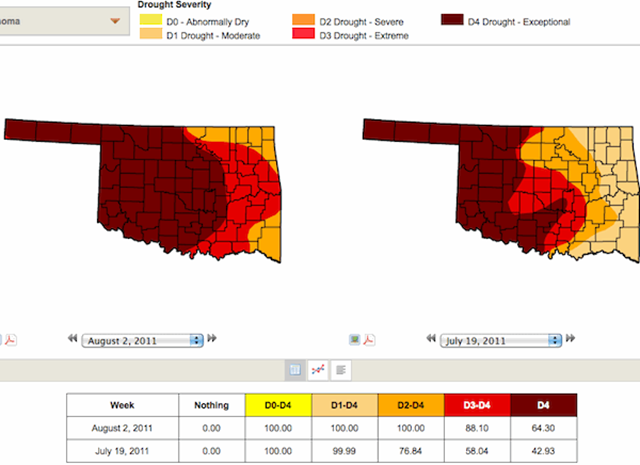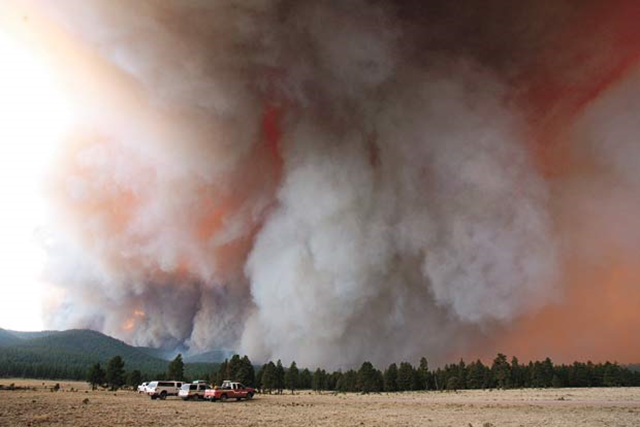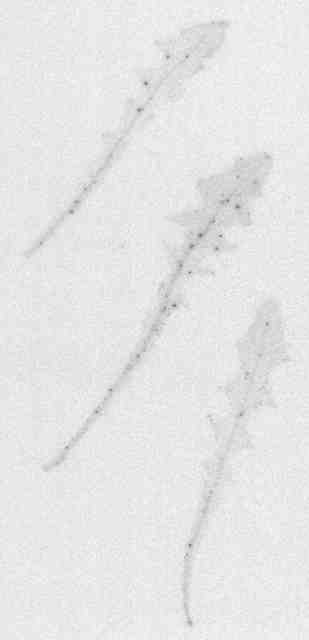20 most popular stories of 2011
It’s time for the yearly retrospectives on 2011, and we’re kicking them off with 2011’s most-viewed stories on Desdemona. It won’t surprise anyone to see that the triple meltdown at the Fukushima-Daiichi nuclear plant was the most popular event, with 9 of the top 20 stories. Most surprising is the continued popularity of a 2009 story on trash in the Maldives, which was #2 in 2010 and comes in at #5 for 2011 – I left it out this time around. Notably absent are stories on the Pakistan floods of 2011, which were every bit as disastrous as the floods of 2010. Interest in that story has waned severely, with the highest ranking post at #248 and discussing the 2010 floods: Pakistan flood crisis as bad as African famines, UN says – ‘Humanitarian crisis of epic proportions’. You may find last year’s retrospectives interesting, too:
- 20 most popular stories of 2010
- The twelve doomiest stories of 2010
- 50 doomiest graphs of 2010
- 50 doomiest photos of 2010
Look for the 2011 editions in the next couple of weeks. 20. Video: 48-foot wave hits Fukushima nuclear plant
9 April 2011 – A brief video clip released Saturday captures the massive tsunami that crippled Japan’s Fukushima Daiichi power plant, showing the wall of water that slammed into the facility and created an ongoing crisis.
19. Video: Workers enter Unit 3 reactor building at Fukushima nuclear plant, 15 June 2011
15 June 2011 – Tokyo Electric Power Company has released video footage taken last week of Number 3 reactor at its crippled Fukushima Daiichi nuclear power plant. The video shows workers wearing protective suits enter the building through a cargo entrance. The roof of the facility was missing with the sky in view because of a hydrogen explosion on March 14th.
18. Australia floods highlight record rainfall
7 January 2011 – Severe flooding in eastern Australia that forced thousands of people to flee their homes ended one of the wettest years ever recorded. The second half of 2010 was the rainiest since record-keeping began in 1900, Australia’s Bureau of Meteorology reported [pdf] in its annual climate statement Friday.
17. Photo gallery: Satellite Photos of Japan, Before and After the Quake and Tsunami 
15 March 2011 – Satellite views of the Fukushima Daiichi nuclear power plant, 15 November 2009 (left) and 14 March 2011 (right). The 2011 image shows smoke, damaged reactor buildings, and radioactive steam venting from Unit 3. DigitalGlobe / nytimes.com
16. Over 900 tons of radioactive sludge from Fukushima sold for cement
8 May 2011 – Fukushima I Nuke Plant has been one big “dirty bomb.” After Koriyama City’s sewage treatment center was tested positive for high level of radioactive cesium in the sewage sludge and slag and the sludge had been already sold (my post here and here), Fukushima Prefecture ordered the testing in other 19 similar treatment centers in Fukushima. 18 out of 19 centers were found to have high concentration of radioactive cesium.
15. Rapture prank: Leave clothes and shoes around town
19 May 2011 – Many pranksters plan to leave sets of shoes and clothes here and there on Saturday afternoon, so that fundamentalist Christians might see these abandoned garments and think the real Christians got sucked up to meet the Lord already. This is a very mean prank. Plus, would American Jesus actually allow naked people into His Kingdom? American Jesus is pretty uptight!
14. Video: Uncontrolled chain reaction at Fukushima – Japan nuclear workers speak out about radiation dangers 
1 April 2011 – Some Japanese plant workers, including former employees who are now miles away from the damaged nuclear reactors at the Fukushima Daiichi plant, say they are concerned about the health of their colleagues and the availability of equipment to keep them safe from the leaked radiation. International nuclear experts believe that melted fuel in reactor No. 1 has caused a “localized criticality,” which is a small, uncontrolled chain reaction that occasionally emits a burst of heat, radiation and a blue flash of light.
13. Arizona fire threatens hundreds of ancient sites
14 June 2011 – Hundreds of archaeological sites are under threat from a weeks-old, still raging wildfire in eastern Arizona. (See Arizona-fire pictures.) Since it began in late May, the so-called Wallow Fire—the biggest in Arizona’s history—has burned at least 733 square miles (1,900 square kilometers), and has now crossed the state line into New Mexico (regional map), the Associated Press reported Tuesday.
26 March 2011 – Fukushima No. 1 nuclear plant, crippled by the Great East Japan Earthquake of March 11, has discharged more radiation than the infamous Three Mile Island nuclear plant in the United States, according to calculations by the central government. It has already reached a level 6 serious accident on the International Nuclear and Radiological Event Scale (INES). Separately, calculations made by experts place the level of soil contamination in some locations at levels comparable to those found after the Chernobyl accident in 1986.
11. Oklahoma and Texas droughts worsened significantly after governors asked citizens to pray for rain 4 August 2011
In light of the sustained drought, Governor Mary Fallin today asked all Oklahomans to set aside time this Sunday, July 17, to pray for rain.
That was two weeks ago. The result is that Oklahoma went from the drought condition on the right to the one on the left in just two short weeks: 
Yes, in a mere two weeks, another 30% of the state went into extreme or exceptional drought! Now the entire state is under severe drought or worse.
10. Video: Airborne transport of cesium-137 from Fukushima to North America
Movie of the Fukushima-Daichii activity in the air (cesium-137, ground level).
9. Radiation-contaminated area spans 800 square km, new map shows
12 May 2011 – The total area contaminated with radiation from the Fukushima No. 1 nuclear power plant is estimated at about 800 square kilometers, or about 40 percent the size of Tokyo, according to a radiation map created by the science ministry and U.S. Department of Energy. The report uses the same level of contamination (555,000 becquerels or higher of cesium-137) that was used to issue compulsory evacuation orders in the Chernobyl nuclear accident in 1986.
8. Photo gallery: Arizona wildfires, 2011 
Fire crew trucks along Forest Route 24 are dwarfed by large plumes of smoke from the Wallow Fire burning in the Bear Wallow Wilderness southwest of Alpine Wednesday June 1. The 40,000 acre Wallow fire is burning 12 miles southwest of Alpine. There is no containment of the fire, which ignited Sunday, May 29, 2011. AP Photo / Arizona Daily Star, Greg Bryan
7. Australia floods cost billions in lost crops, mining – ‘Most costly economic disaster in our history’ 
28 January 2011 – Deadly floodwaters that have swamped huge parts of Australia will cost the nation 1 billion Australian dollars ($990 million) in agricultural losses and billions more in lost coal exports, the nation’s treasurer said Friday. The damage figures released by federal Treasurer Wayne Swan were the first official estimates of the financial fallout from the floods, and come one day after the government unveiled a proposal to institute a temporary tax to help pay for the disaster. “This is going to be, most likely, our most costly economic disaster in our history,” Swan said.
6. Cyclone Yasi upgraded to Category 4 – Landfall at 10pm Wednesday evening
2 February 2011 – CYCLONE YASI has been upgraded to Category Four and is likely to cross the coast earlier than expected at 10pm Wednesday evening, according to the latest update from the Bureau of Meteorology. Senior forecaster Rick Threlfall said while the area where the eye crosses is important, destructive winds will be felt up to 200km either side of it. “Where exactly it crosses is slightly irrelevant,” he said. “A large area either side is likely to see destructive or very destructive winds.”
5. Photo gallery: Gamma camera views inside Fukushima Daiichi Unit 1 reactor building 
On 22 May 2011, TEPCO imaged the inside of Unit 1 with visible light and gamma-ray cameras. Here are a couple of photos from that expedition. Desdemona wonders if the pixel noise in the visible-light images is caused by gamma rays hitting the camera’s image sensor.
4. Shark poachers hold chef Gordon Ramsay at gunpoint, douse him with petrol
3 January 2011 – Celebrity chef Gordon Ramsay was doused in gasoline and held at gunpoint as he tried to uncover the dark world of illegal shark fin trading for a new TV show. The Hell’s Kitchen star was shooting scenes for a British program Big Fish Fight when he confronted gangsters in Costa Rica who had slaughtered thousands of sharks to sell their sought-after fins. But Ramsay was left terrified when the gang kept their guns trained on him and his TV crew before throwing fuel over him. He was later advised by local police to flee the country for his own safety.
13 January 2011 – Floods and mudslides in Brazil have killed more than 330 people, with more feared dead after three towns just north of Rio De Janeiro were hit on Wednesday. A month’s worth of rain fell in one day in parts of Rio De Janeiro state and roads and bridges were swept away by the mud. Floods are bringing death in other countries as well as Australia. At least 30 people may have been killed and about a thousand homes damaged by floods in South Africa in the past week. Heavy rains have hit Johannesburg and Pretoria as well as provinces in the northeast and eastern parts of the country. An image has emerged from Sri Lanka of a dead elephant calf stuck high in a tree after getting caught up in the country’s fast-flowing floods. Sustained heavy rain and floods in the central and southern Philippines have killed 42 people and damaged crops and infrastructure worth more than 1 billion pesos ($23 million), disaster officials said on Thursday, 13 January 2011.
2. France farmers in crisis with worst drought in 50 years, hottest year in a century
1 June 2011 – The spring of 2011 has been the driest in decades and the hottest in a century, a deep concern for France’s indebted farming community. The younger generation, which has borrowed heavily to invest in properties, is most gravely affected. The worst drought in decades threatens to cripple France’s agricultural sector, while strict water restrictions are being imposed across the country. Hervé Brulé, a project director at the French Ministry of Ecology, told FRANCE 24 on Wednesday the water shortage was more severe than 1976, when a heat wave and 16-month dry spell parched much of northern Europe. “This is much worse than anything on record,” he said. “Of course the weather might change as we go into the second half of the year, but so far we have had less spring rain than in 1976.”
1. Autoradiographs of radioactive dandelion and horsetail from Fukushima 
17 May 2011 – Professor Mori says the pictures show that radioactive materials have been absorbed from the roots and distributed throughout the plants. He thinks the dark dots on the dandelion leaves are where the radioactive materials landed on the leaves.